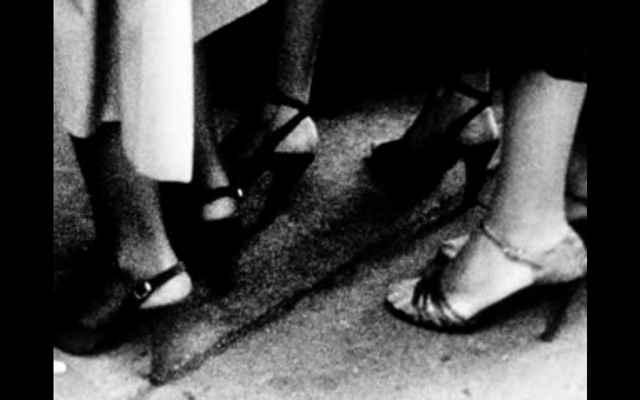My introduction to writing about art was a simple one. Bored one afternoon, I was looking at Ubu—an online platform I had discovered through a professor who screened video works from Ubu in a seminar—viewing videos of artists I knew. I decided to write an e-mail to Kenneth Goldsmith, founder of Ubu, to see if I could write for him. I liked the idea of contributing to a free platform; writing about the works, right under the viewing box, seemed simple, direct. I soon received an affirmative e-mail from Goldsmith and this was my introduction to online publishing.
I recount this anecdote not to muse about how I began writing, but how I started thinking about online publications and artists. Goldsmith is obviously not your typical editor, nor is Ubu a regular platform. The celebration of self-organization and the under-viewed was something that was formative for my thinking about publishing on the Internet.
Since that first encounter with Ubu and my almost-immediate integration to the web of information that constitutes it, I have been assessing the values of Internet publishing and the production of a public, a readership through the Internet—I’m both a reader and a publisher, a consumer and a provider online. In the absence of a material means—material, in this context, referring to publishing, which has a concrete end-product, which a reader can hold between two hands—what is publishing online? How is it related to in-print publication? What does online readership mean?

In setting up the coordinates of online publishing, I’m going to mark two points as references. I’m going to use two projects based out of New York, e-flux journal and Triple Canopy.
Let’s put e-flux journal on one side. The most important characteristic of e-flux journal is that it is an artist’s project. The content and the language is not that different from the language of what we would think of as academic publications; there is a distinct relationship with in-print publications such as October. The writers are artists and academics; the selected artists all employ research as a tool in their artistic practice. The founders of e-flux journal call into question well-recognizable, canonized, accepted forms of writing by producing similar content. In other words, these artists claim ownership over a familiar format. The second important characteristic of this publication is that both original and previously-published content is edited, collated, and shared on an online platform. This approach underscores the accessibility of their agenda by everybody. e-flux journal revives academic publication by facilitating access, makes this content accessible by using unserious images and asserts the artist’s voice in academic publishing, having formulated what they do as an artist’s project.
Let’s put Triple Canopy on the other side. Triple Canopy also has two characteristics that I’d like to underscore. The first is that none of the projects published on Triple Canopy can be adapted to print; each published project employs the Internet as its medium. The question at the heart of the medium of Internet—why Internet?—is answered by not mimicking print publication. For example, there are published projects, which control the viewing experience.
The second characteristic of the publication is their idiosyncratic editorial setup. The editors form the issue around a theme, but instead of publishing all the content at the same time, the publication is spread over time; each project is included, one by one. Triple Canopy is based on the idea of unfolding a whole over time, rather than the diaristic blog format. The Internet is all about time and consumption of time and Triple Canopy uses time as a tool, a medium that is integral to their method of publishing—after all, a magazine has to be published and delivered to your door, but with online publishing, why reveal all in one moment? The readers are almost trained to be patient and to participate in the process of publishing. The Internet is inclusive; the more involved a reader is, the more likely they will come back.
What separates these two coordinates is thus the specific use of the Internet—e-flux journal uses the Internet as a method of dissemination while Triple Canopy uses the Internet as a means of production.
These two coordinates are important to think in thinking about Internet readership, as the demands from the readers are quite different. While e-flux journal’s publishing online of the hefty content is a gesture of dissemination, mimicking their distribution of information from institutions all over the world, Triple Canopy is comfortable existing as what it is and what it is only. This gesture is continued in Triple Canopy’s public programming in New York and elsewhere, where the production of a public through the reading of Gertrude Stein’s The Americans and such, highlight the literal performance of text. Text, in different media, need to be performed differently, both by the author and the reader.
Coming of the Hyphen, my title for this piece, is a residual text image from the Stuart Hall Project—one of the chapters of the film was called this. The hyphen, often underrated, connects two independent things, temporarily, with no obvious harm to either party. The coming of the hyphen thus announces a joining. Internet publishing is about the reader going to the content.
This specific relationship between the reader and the Internet leads me to the questions: as the production of art is increasingly about setting up conditions and situations, borrowed and altered from other disciplines’ methodologies, then what are our expectations from art publishing? What are the necessary conditions and spaces that it produces? At what point does a publication become merely self-reflective, rather than self-reflexive? And what are the potentials liberated by readership, the public act of reading on the Internet?
—Merve Ünsal
